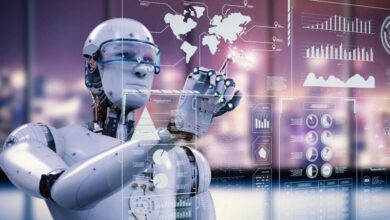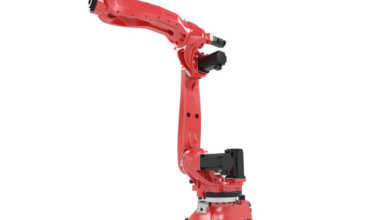The Terrifying and Awesome State of AI and Robotics

Robots aren’t new. They’ve been around in some form for over a century, automating everything from the horse and buggy, to the factory that makes the horseless carriage. What is new however is the integration of the neural net which allows for the robot to watch a human do something, like make a coffee or put away a fork, and learn how to do that task as well.
In our ongoing technology series we’re going to look at the current state of robotics, specifically the humanoid.
The humanoid form robot has long been a star of science fiction, as humans are fascinated with creating something akin to itself. But beyond the cybermen of Doctor Who, the human form has a practical application that many manufacturing companies are beginning to see as essential.
The world is built for humans and replacing human labor will often require some level of human form. Stairs are not easily navigable by wheels and elevators aren’t always available. Many machines require hands to manipulate and most factories require arms to lift objects from a shelf and legs to transport it to another location.
There’s something to be said too for a robot that reminds you of a human so when you see a few hundred of them walking around a factory sending packages human workers can more easily navigate around them. There is also the potential use for these humanoid robots to be used in a health care setting in which case looking human will help put patients at ease.
A closer look at the leaders in the space.
Tesla – Tesla’s Optimus caught the excitement of many robotics fans not only because of its connection to Tesla but because of its rapid progress in a short period of time. Debuting as a concept (a human in a suit), the robot has gone from an idea to a functioning walking robot in under two years.
“We’ve improved our locomotion stack, frequently walking off-gantry without falls and with a faster, increasingly more human-like walking gait,” says Optimus engineer Milan Kovac.
At this point Optimus is still operating with a human behind the controls but you can see the progress with its gait and hand actuators. What is most exciting about this robot is the future integration with the Tesla neural net. The possibilities are endless. The infrastructure Tesla has for its full self-driving vehicles can easily (for someone with an engineering background) translate to a humanoid, meaning that there are millions of hours of tagging already completed, potentially putting this robot ahead of others for object recognition and navigation. The possible future integration with XAI and Grok are also interesting given that Grok has access to one of the largest human language models in X. Given its ability to carry nearly 50 lbs at 5 miles per hour and lift almost 150 lbs it would make sense that this robot is being designed for the Tesla factories themselves rather than for broader commercial use. It might also explain why the robot is about the height of an average man, given that the factory is largely configured for people of this height.
Figure – Figure made waves with its partnership with OpenAI, another large language model that has a vast repository of natural human language. Their partnership was made public with a demo of their robot using a neural net to make coffee.
Last month we demonstrated Figure 01 making coffee only using neural networks
This is a fully learned, end-to-end visuomotor policy mapping onboard images to low level actions at 200hz
Next up: excited to push the boundaries on AI learning with OpenAIpic.twitter.com/DNAZWnaYK3
— Figure (@Figure_robot) February 29, 2024
Figure also has other big name backers including Microsoft (not surprising given their connection to OpenAI) and Jeff Bezos. Not surprisingly the engineers have connections to Boston Dynamics and Tesla, and there is already a contract in place for Figure robots to work in BMW’s South Carolina plant.
Agility – Agility Robotics and Digit made headlines after it collapsed at an expo fair where it worked for 20 hours straight. The unique aspect of this is that the knees bend backwards so although it vaguely resembles a human form it’s not strictly humanoid but close enough that we’ll include it for this article. What makes Digit exciting, other than being headquartered in Corvallis, is that it’s factory ready. Meaning you can order one, or a hundred of these for deployment in your factory right now. Figure is making progress with its agility, object recognition, and use cases
Boston Dynamics – You might know it from the dog but we’re talking humanoids here and Atlas is their answer to the humanoids. They recently retired their pneumatics version and introduced a terrifying horror of a robot that rose from the ground in something reminiscent of the movie the Ring. This robot isn’t trying to make friends.
Which makes sense given that it was developed over 10 years ago for DARPA.
In that time the robot has lost its tethers and learned gymnastics, but also become frighteningly quick, and a bit smaller. Although the manufacturers claim that it’s an all purpose bot the video footage of their dog version with a flame thrower, a gun, and a variety of other attachments make it clear that they are not opposed to military use cases.
But don’t worry, there are more than enough weapon technologies that you don’t need to worry about humanoid soldiers for a while. It’s far cheaper to equip a $100 drone with explosives than it is to send a robot dog with a flame thrower to your door.
Most likely these robots will be used to fill the very large labor gap in the manufacturing and health care industries. As millennials are choosing to have fewer children, there will be fewer people to run the machines set in place over 100 years ago. If we want to maintain the quality of life we’ve grown use to we either need a large baby boom (unlikely given the reduction in fertility rates attributed to a host of things from microplastics to hormone disrupting chemicals) or we need to replace the labor with a robot.
Ideally we’d do both but we’ll save that for a future discussion.



